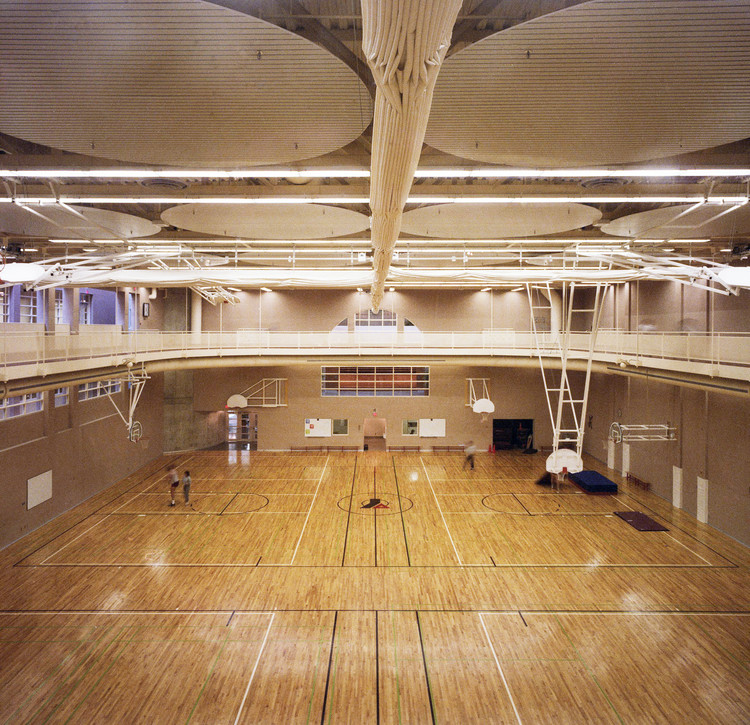Vineyard Högl in Wachau Elmar Ludescher + Philip Lutz
2015-06-29 03:00
架构师提供的文本描述。位于奥地利Wachau地区边缘附近,斯皮策地堑山谷向瓦尔德维特尔延伸,就是葡萄园霍格。气候正处于葡萄种植的边缘,比附近的多瑙河更冷,更不适宜居住。然而,这种气候和丰富的片麻岩和云母片岩土壤正是为什么葡萄酒来自该地区是如此独特。正如葡萄酒展示了每个地区在各个方面的多样性,并遵循特定的自然环境,这座建筑被锚定在这个独特的地方。
Text description provided by the architects. Located near the edge of Austria’s Wachau region, where the Spitzer Graben valley opens towards the Waldviertel, is Vineyard Högl. The climate is on the edge of viticulture, colder and more inhospitable than at the nearby Danube. However this climate and the rich gneiss and mica schist soil are precisely why wine from the region is so unique. Just as the wine demonstrates the diversity within each region in all its facets and follows the given natural circumstances, the architecture is anchored in this unique place.
Courtesy of Elmar Ludescher + Philip Lutz
Elmar Ludescher Philip Lutz
以石墙形成的陡峭梯田景观为主导的现代建筑成为旧农庄的一部分,是为生产和品尝葡萄酒而设计的。
Dominated by a landscape of steep terraces formed by stonewalls, the modern building becomes part of the old farmyard and is designed for the production and tasting of wine.
Courtesy of Elmar Ludescher + Philip Lutz
Elmar Ludescher Philip Lutz
该结构增强了其位置的力量,并通过完成庭院来利用合奏的潜力。与现有的建筑一起,房子形成了一个内部庭院,它被屏蔽在街道上,并邀请我们休息。这座新建筑的体积法符合生产和品尝两项功能。生产大厅沿路发展,而品尝区则朝向前厅。这座新建筑确定了两个截然不同的入口区域。
The structure reinforces the power of its location and uses the potential of the ensemble by completing the courtyard. Together with the existing buildings the house forms an inner courtyard, which is shielded against the street and invites us to take a rest. The new building’s volumetry corresponds to the two functions of production and tasting. The production hall evolves along the road, whereas the tasting area is orientated with its viewing side towards the forecourt. The new building defines two distinct entrance areas.
Courtesy of Elmar Ludescher + Philip Lutz
Elmar Ludescher Philip Lutz
游客欢迎在山墙边,导致一个代表性的入口法院,然后是亲密的庭院。这座房子正在有意识地寻求融入瓦肖人历史上成长起来的物质语言。它有厚厚的抹灰墙,符合当地的工艺传统。玻璃表面被紧密和白色的木质石板所屏蔽,这表明了它们生长的不均匀性。屋顶是一个古典风格(永恒)的当代版本,在该地区的传统中有着深厚的根基,可以追溯到君主制。
Visitors are welcomed at the gable side leading to a representative entrance court which is followed by the intimate courtyard. The house is consciously seeking to integrate itself into the historically grown material language of the Wachau. It has thick plastered walls which correspond to regional craft tradition. Glass surfaces are shielded by tight and whitewashed wooden slats which show the unevenness of their growth. The roof is a contemporary version of a classic style (eternit) that has deep roots within the region’s tradition, dating all the way back to the monarchy.
在其遥远的效果,该项目的目的是整合自己的成长文化景观的瓦乔乌。它只是一目了然,它是一个异化的雕塑结构,反映了高级的酿酒艺术的抽象形式。
In its distant effect the project aims to integrate itself into the grown cultural landscape of the Wachau. It only becomes clear at a second glance, that it is an alienated sculptural structure which reflects the high art of winemaking in an abstract form.
Courtesy of Elmar Ludescher + Philip Lutz
Elmar Ludescher Philip Lutz
Architects Elmar Ludescher, Philip Lutz
Location Wachau, 2822 Walpersbach, Austria
 举报
举报
别默默的看了,快登录帮我评论一下吧!:)
注册
登录
更多评论
相关文章
-

描边风设计中,最容易犯的8种问题分析
2018年走过了四分之一,LOGO设计趋势也清晰了LOGO设计
-

描边风设计中,最容易犯的8种问题分析
2018年走过了四分之一,LOGO设计趋势也清晰了LOGO设计
-

描边风设计中,最容易犯的8种问题分析
2018年走过了四分之一,LOGO设计趋势也清晰了LOGO设计






















































